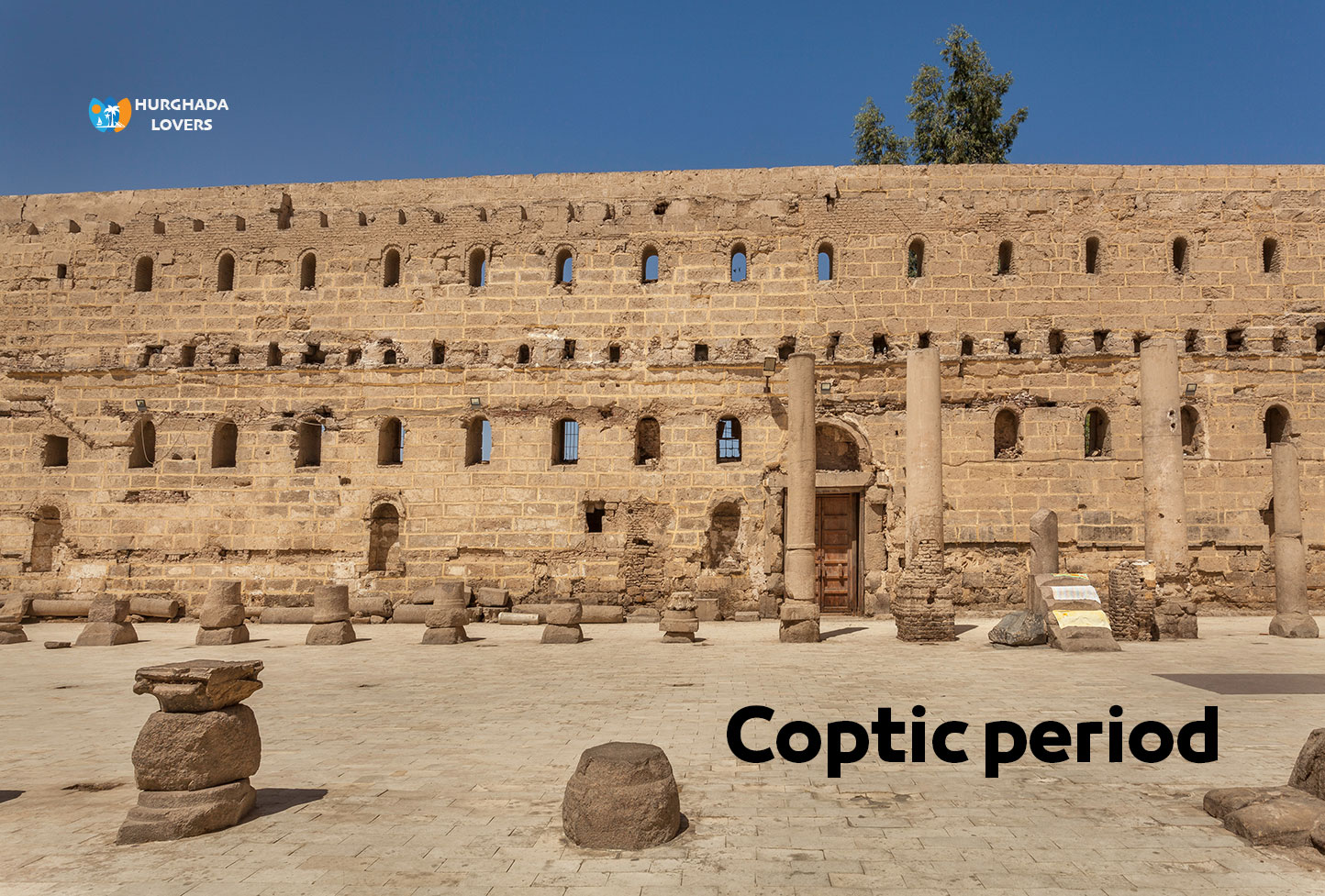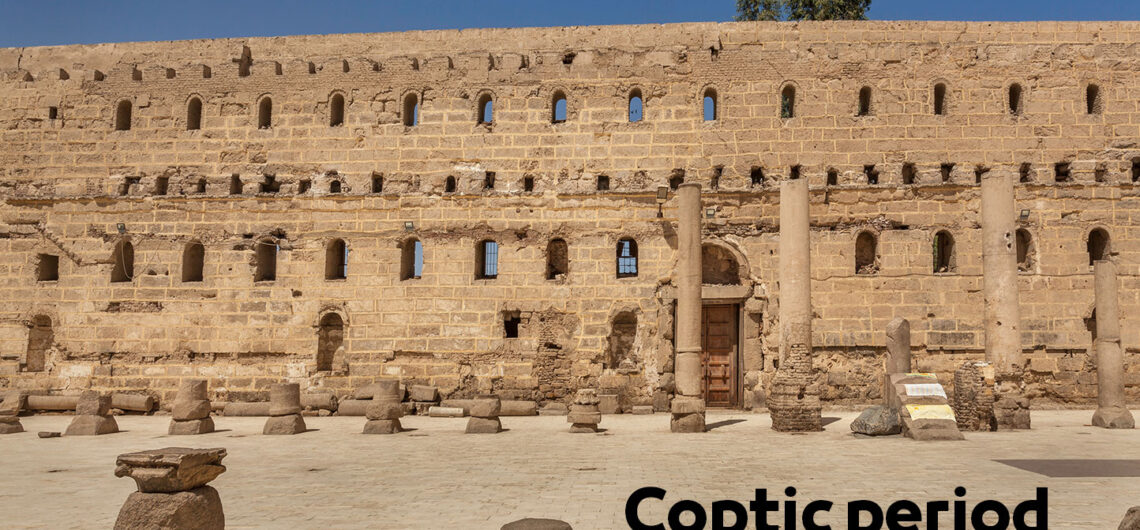Coptic period in Egypt | Facts, History How it began, Is Coptic Christianity the oldest, Are Coptic Egyptians ancient Egyptians and more about Coptic Orthodox Church of Egypt.
Facts about Modern Egypt Civilization and the history of when the period of rule began, the most important kings and rulers of that period, achievements, the most famous symbols of Coptic art, the most important Coptic Egyptian Antiquities, and more secrets that you did not know before..
The periods of the Coptic era in ancient Egypt are an informal name for the morals of Egypt, the era of the late Roman kingdom “Greek-Roman era“, then Ptolemaic Kingdom (day, it is the periods of rule from the third century AD to the fourth century AD)..
Coptic period in Egypt Facts
The period of rule during the era of Byzantine Egypt, that is, from the fourth century AD until the seventh century.
This archaeological era was also defined by the periods of religious transformations from the era of Egyptian culture to the era of Coptic Christian culture, and it continued as such until the advent of the Islamic Egypt History and that was specifically in the seventh century AD..
History of the Coptic era
In fact, this important era in the life of ancient Egypt began around the reign of the third century, and this was based on a range of sources and uses in that period..
It also continued until the beginning of the periods of noticeable decline in the Christian religion in Egypt, and that was in the ninth century, or let us say once Islam arrived in Egypt to begin the history of Islamic Egypt in the seventh century..
The relationship in that era with Pharaonic Egypt
In fact, during the periods of rule in this era, Christian or Coptic writers sought to discredit some of these pagan practices or practices perceived at that time as evil or satanic practices..
They also worked at this time to make attempts to reformulate what they could in the light of more positive Christian rule..
A vivid example of this is the permanent continuity or mandate that they had in order to use those rituals in matters of mummification in various particular monastic contexts or other..
It is also very important to mention or point out in this regard that all of those barbaric practices mentioned were indeed tolerated, but despite that, it was greatly tolerated, but only to a certain extent..
For example, when peasants in ancient Egypt began keeping a number of mummies of Coptic martyrs in their homes, Athanasius of Alexandria at that time reprimanded them for acting or not acting. In a way that is appropriate or as good Christians should do.
How were relations with the Christian Church?
In fact, the Coptic Church or Christians in Egypt, or what was known as the Church of Alexandria during the reigns of this era, had suffered from both persecution and repression before the major intervention in that period of time..
The worst of these major persecutions of witchcraft occurred in the early sixth century AD, and that period was during the reign of Emperor Phocas..
This is what prompted the fortunate Copts or Christians at that time to stand valiantly by the rule of the Persians, with whom at that time of persecution the Eastern Roman Empire was in a constant and great state of creditor war..
But despite all these difficulties that the Church faced, the Coptic Church not only survived during that period, but it also took its path to great prosperity throughout Egypt..
Egyptian civilization, Byzantine and Coptic civilization – the Coptic era
The Egyptian civilization did not tire of interacting with the civilizations that controlled it, but it withered with the coming of the Byzantines and the emergence of Christianity before it in Egypt. Despite this, the Egyptian religion was the source of many of the beginnings of the Christian religion and the culture of the Byzantines until the Coptic culture appeared, which was the result of this creative interaction..
“Pagan customs remained even among the first Christians in Egypt, even though the upper classes of society were loyal to what remained of the Egyptian religion in the third and fourth centuries AD. The Temple of Serapis in Alexandria was the first temple, and in Memphis, Asclepius was worshiped above all else, the wise man.” The ancient Imhotep who became a god.
He also replaced Yahtah, and Bes the Younger moved God Osiris, the most famous Egyptian deities – Ancient Egyptian gods and Goddesses in the Ancient Egyptian religion, from his place in Abydos in Sohag and began announcing his prophecies, and he was greatly appreciated.
In the Akhmim region of Central Egypt, as in the Geography of ancient Egypt, a god called Bitbi was worshiped.
Although the Christian religion stood against the Egyptian polytheism, it absorbed many of its characteristics, especially the Egyptian trinity, which became synonymous with the beginnings of the emergence of the Christian trinity and an incentive for its emergence and growth in the systems of Christian theology. We believe that the emergence of the Christian trinity was under Egyptian influences and with suggestions from displaced Christian and Assyrian priests and clerics. From the ancient religion to the Christian religion.
The supremacy of the Egyptian divine trinity (Osiris, God Horus, God Isis) paved the way for the early Christian trinity (Father, Virgin, Son). With the spread of Christianity in Egypt, the gods of the ancient religion became ghosts in the new religion. In fact, the word “Natar,” which used to refer to the gods, became Before, in the language of Christians, it meant evil spirits. Although these gods became worthy of the hatred of their original people, they continued to maintain in their homeland Egypt a place to which they always resorted, which was magic..
We see that the essence of Egyptian civilization did not spread its embers to those who inherited it from the Arabs and Muslims inside and outside Egypt, but rather poured it into two parallel flowing rivers: the Greek and Roman civilizations, then the Hellenistic civilization and the Christian religion, which climbed to the west through the two streams, ascending from the south of the Mediterranean to its north..
This spark was the source of cultural activity for the Middle European era (through Christianity), and the source of modern scientific activity for the modern European era (through the Hellenistic civilization that emerged and stimulated the emergence of the Renaissance in modern European history.).
During more than the last fifteen hundred years of its life, despite the political setbacks that Egypt went through, the ancient Egyptian religion showed an unparalleled stability and, in all eras of decline and occupation, it rose again, benefiting even from its enemies..
Indeed, the Egyptian religion defeated its enemies in their countries. The worship of Isis and Osiris swept throughout the Roman Empire, and it found public and secret groups that were enthusiastic about it and preached it. Despite the presence of very strong competition from other religions in that era, “it was not possible for the Great Mother in Asia Minor.”.
Nor the rampart of the Persian sun god; Neither of the Jewish gods can take precedence over the Egyptian gods, for many reasons. One of the first of these reasons was the mysterious reverence that one felt towards this country with its ancient civilization and wondrous monuments..
Sources: The book Egyptian Civilization, Khazal Al-Majidi
Note: Facts and secrets of the history will be added soon…
Hurghada Excursions Lovers, Best Travel Agency in Hurghada to provide daily tours to visit the Tourist attractions of Luxor by Hurghada to Luxor Tours and Hurghada to Pyramids Trips. Book online when you come to Hurghada, El Gouna, Sahl Hashish, Makadi Bay, Soma Bay.

